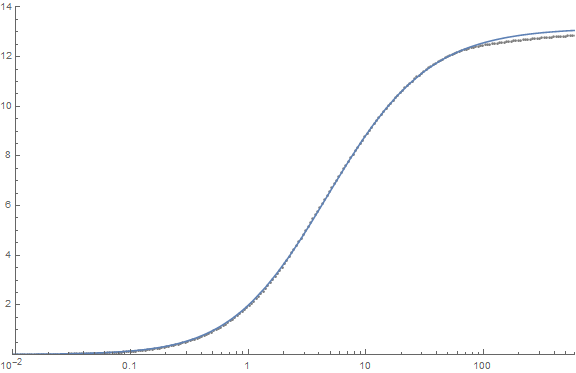Recently NVIDIA send us a nice HDR TV and we got a chance to checkout this new HDR display stuff in practice. It was a rather a fast implementation, as our game is shipping in less than 2 months from now. Regardless, results are good and it was definitely worth to identify issues and make preparations for full HDR display support. In future, we will be revisiting HDR display implementation, but first we need HDR monitors to become available (current HDR TVs are simply too big for a normal work), so we can think about using increased brightness and color gamut and in our art pipeline.
Tone Mapping
We want to output scRGB values (linear values, RGB primaries, 1.0 maps to 80 nits and ~12.5 maps to 1000 nits). Just like for the LDR display I just fitted ACES RRT+scRGB (1000 nits) to a simple analytical curve. Currently there is no HDR TV which supports more than 1000 nits, so there was no point in supporting anything else.
float3 ACESFilmRec2020( float3 x )
{
float a = 15.8f;
float b = 2.12f;
float c = 1.2f;
float d = 5.92f;
float e = 1.9f;
return ( x * ( a * x + b ) ) / ( x * ( c * x + d ) + e );
}
Just like in case of LDR curve, this curve is shifted a bit and in order to get a reference curve just multiply input x by 0.6. Curve isn’t precise at the end of the range, but it isn’t very important in practice:

UI
First issue with UI is that 1.0 in HDR render target maps to around 80 nits, which is looks too dark compared to the image on a LDR display. Solution was very simple – just multiply UI output by a magic constant :). Second issue with UI is that alpha blending with very bright pixels causes artifacts. In order to fix that we needed to draw UI to a separate render target and do a custom blend it with the rest of the scene in a separate pass.
Color Grading
Color grading was the only rendering pass, which used scene colors after tone mapping. Obviously, having two different curves (one for LDR display and one for the HDR display) breaks consistency of this pass. I looked through our color grading settings and managed to simplify it to a simple analytic system – shadow / highlight tint with some extra settings. Redoing color grading at this stage of the project was out of the question, so all old color grading settings were automatically fitted using least-squares. For the next project we plan grading in some different space with more bits and log like curve (ACEScc or Sony S-Log).
Content
Some things in our game look awesome in HDR display, but some don’t look so good. Most issues are caused by “artistic” lighting setups, which were carefully tuned for the LDR tone mapping curve. E.g. in some places sunlight is nicely “burned” in when viewed on LDR display, but on the HDR display looks washed out, as lighting isn’t bright enough. Unfortunately, this is something that can’t be fixed last minute and something to think about when we will be creating content for the next game.
Summary
Current HDR displays don’t have amazing brightness. 1000 nits (current HDR displays) vs 300 nits (current LDR displays) isn’t that big difference, as perceived brightness is square of luminance. On the other hand HDR displays add a lot of additional details – pixels which were grey, because of the tone mapping curve, now get a lot of color. Anyway, we are moving forwards here and there is no excuse not to support HDR displays.
Digging Deeper
- “HDR Rendering in Lumberyard” – Hao Chen (Amazon Lumberyard)
- “Advanced Techniques and Optimization of HDR Color Pipelines” – Timothy Lottes (AMD)
- “DirectX 12 Advancements” (pdf, video) – Max McMullen (Microsoft)
- “UHD Color for Games” – Evan Hart (NVIDIA)
- “Preparing for Real HDR” – Evan Hart (NVIDIA)
- “Rendering a Game for HDR Display” – Evan Hart (NVIDIA)
- “Displaying HDR Nuts and Bolts” – Evan Hart (NVIDIA)
- “Implementing HDR in ‘Rise of the Tomb Raider’” – Jeroen Soethoudt (Nixxes), Jurjen Katsman (Nixxes) and Holger Gruen (NVIDIA)
- “Getting to know the new HDR” – Evan Hart (NVIDIA)

Hey Kris, nice post, I love the least squares shadows/highlights fit idea! I have a question – your RRT+ODT fit is encoded in linear space or PQ?
LikeLike
Thank you! Yes, you are perfectly right – this post doesn’t contain crucial info about what do we have to output for HDR displays on Windows. Basically, we want to output linear (no PQ) Rec.2020 values. I’ll add it to the post.
LikeLiked by 2 people
wonderful work. I have a question : the input value x of ACESFilmRec2020 is just sRGB color or need to be transformed to AP0 aces first?
LikeLike